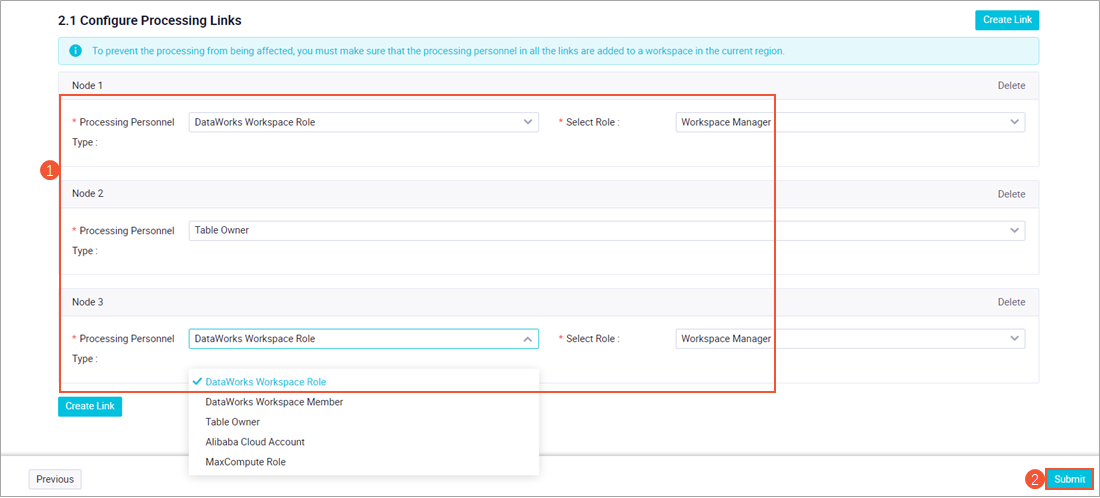DataWorks allows users who are assigned the Workspace Administrator role to configure request processing policies for publishing DataService Studio APIs in workspaces.
Limits
Only DataWorks Enterprise Edition allows you to configure request processing policies for DataService Studio.
Create a request processing policy
Go to the DataStudio page.
Log on to the DataWorks console. In the top navigation bar, select the desired region. In the left-side navigation pane, choose . On the page that appears, select the desired workspace from the drop-down list and click Go to Data Development.
Click the
 icon in the upper-left corner and choose .
icon in the upper-left corner and choose . In the left-side navigation pane of the Approval Center page, choose .
On the page that appears, you can view a list of created request processing policies and edit and delete the request processing policies.
On the Data Integration page, click Create Policy in the upper-right corner and configure the parameters in the Create Policy wizard.
Enter the basic information
 Configure the Policy Name and Purpose parameters based on your business scenario to which the request processing policy applies.
Configure the Policy Name and Purpose parameters based on your business scenario to which the request processing policy applies.
Specify the data range
You must specify the data range to which the request processing policy applies based on your business scenario. After the request processing policy is created, the requests for the permissions on the data in this data range must be processed based on this request processing policy.

Configure the notification methods
Supported notification methods: text messages, emails, DingTalk chatbots, and Webhook URLs.  After you configure the notification methods, notifications are sent to approvers based on the configured notification methods when a permission request is submitted for processing.
After you configure the notification methods, notifications are sent to approvers based on the configured notification methods when a permission request is submitted for processing.
You need to only configure notification methods in this section. You can configure approvers when you configure request processing nodes in the next step.
To ensure that the approvers can receive notifications by using text messages or emails, you must add the approvers as alert contacts of DataWorks. For more information, see Configure and view alert contacts.
To ensure that the approvers can receive notifications by using a DingTalk chatbot, select Custom Keywords when you configure the Security Settings parameter in the Add Robot dialog box. Then, enter DataWorks in the Custom Keywords field. Make sure that the other check boxes are cleared when you configure the Security Settings parameter.
If you do not add DataWorks as a custom keyword or you select other check boxes when you configure the Security Settings parameter, the approvers cannot receive notifications by using the DingTalk chatbot.
Configure the request processing nodes
You can specify an approver and a role for the approver on each request processing node in the Configure Processing Links step.  When you configure the request processing nodes, take note of the following items:
When you configure the request processing nodes, take note of the following items:
Request processing procedure: After a request processing procedure is configured, a request is forwarded to the approvers that you specified on the request processing nodes in sequence. The next approver can receive a request processing notification and process the request only after the current approver approves the request.
Approver: You can specify the following types of entities as approvers on the request processing nodes: DataWorks workspace-level roles, DataWorks workspace member, table owner, Alibaba Cloud account, and MaxCompute roles.
NoteDataWorks sends notifications to each approver based on the configured notification methods when a permission request is submitted for processing. To ensure that the approvers can receive notifications by using text messages or emails, you must add the approvers as alert contacts of DataWorks. For more information, see Configure and view alert contacts.
If multiple users that assume the same role are specified as approvers on a request processing node, notifications are sent to all the approvers. In this case, if one of the approvers on the request processing node approves the request, the request is forwarded to the next request processing node.